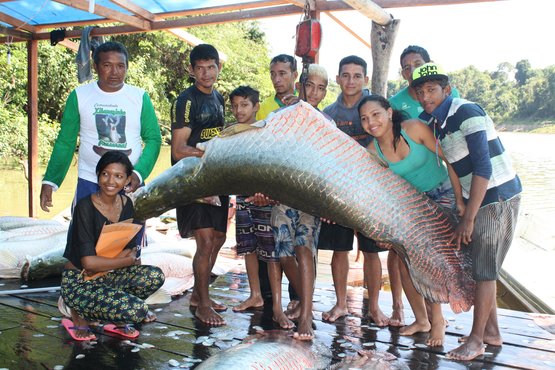Instituto Juruá works with local organizations to design a zoning strategy for fisheries and hunting in floodplain lakes and forests, ensuring the existence of no-take, subsistence, and open-access areas. We then support local communities in the effective protection of their lakes, and the subsequent management of local natural resources. Protected lakes, for example, have seen dramatic increases in abundance of many important fish species, including the commercially valuable pirarucu (Arapaima gigas).



